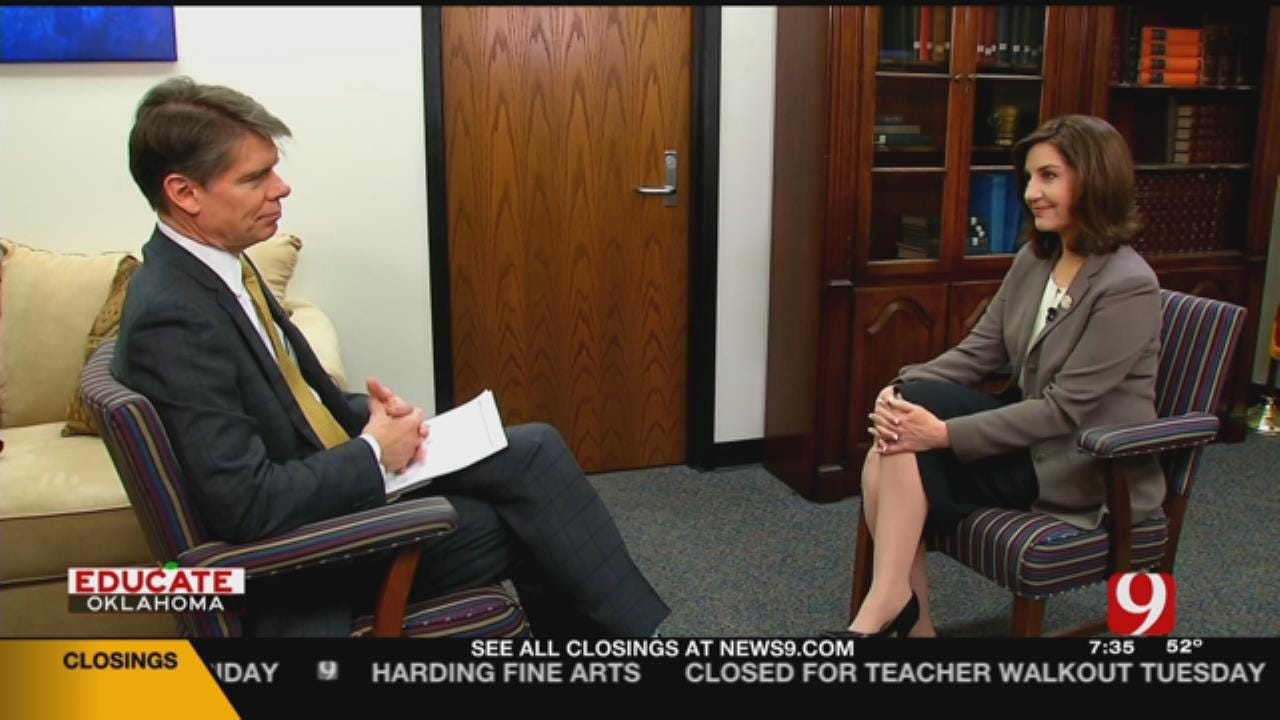The Underfunding Of Public Education In Oklahoma
<p>When it comes down to it, there is one thing that drove teachers to agree to walk out of their classrooms, superintendents to agree to shut down their schools, and lawmakers to agree to raise taxes: the underfunding of public education in Oklahoma. </p>Sunday, April 1st 2018, 4:35 pm
When it comes down to it, there is one thing that drove teachers to agree to walk out of their classrooms, superintendents to agree to shut down their schools, and lawmakers to agree to raise taxes: the underfunding of public education in Oklahoma.
Solving that problem -- figuring out how to boost education appropriations -- has become part of every politician's stump speech and has dominated all recent legislative activity at the Capitol.
But no one understands the impact of the lack of sufficient dollars better than teachers and school administrators.
"We have some classes with 34 and 35 kids in them," said Robert Romines, superintendent of the Moore Public School District. "That's too many kids to teach at any given point."
Dr. Romines says the biggest impact of reduced funding has been increased class sizes, because they haven't been able to keep up with the district's growth.
"Last year," Romines explained, "we grew by about 450 students, and we got absolutely no money at mid-term, and we still have to hire those teachers, we still have to hire para-professionals, and so, that's difficult."
State Superintendent Joy Hofmeister says Moore is a microcosm of the state, in both funding and growth.
"We are operating on relatively the same dollars as 2008," Hofmeister stated, in a recent interview, "but with 50,000 more students."
According to data from the State Department of Education, statewide student enrollment, for the 2007-08 school year, was approximately 641,000. Enrollment at the start of this school year was 695,000. Over that same time frame, state aid funding has dropped from $2.05 billion to $1.87 billion.
Enrollment has increased 54,000, while the state's primary means for supporting those students is $180 million less.
"It's a pretty dismal situation," said David Blatt, executive director of the Oklahoma Policy Institute.
Blatt says, many states were forced to cut appropriations to education when the recession hit in the late 2000's, but he says most have since restored, or even surpassed, their earlier funding levels.
That has not happened in Oklahoma.
"Oklahoma has cut state aid funding by twice as much as any other state over the last decade," Blatt said, "we're down almost 30 percent, per pupil, adjusted for inflation."
The bad news doesn't end there. Oklahoma is last in the region in per-pupil spending and last in the nation in teacher pay.
Blatt says Oklahoma got to this point, not because the state has so little money, but because of where leadership has placed its priorities.
"Even when oil prices were $110 a barrel, we still weren't able to give teachers a raise," Blatt pointed out, "because the priority those years included tax cuts and tax breaks."
Many believe the state's current teacher shortage can be traced directly to those types of choices.
Hoping to turn the tide, Superintendent Hofmeister chose to submit a $2.9 billion dollar budget request for FY 2019, which would be a 20 percent increase over the current fiscal year. While some criticize the request as unrealistic, Hofmeister says it's unrealistic to think recent funding decisions aren't causing irreparable damage.
"We are harming our future every day we kick the can or say we can't," said Hofmeister, "it is time for the Legislature to find a way."
In the Moore school district, Dr. Romines says they've been finding a way to get by -- using emergency-certified teachers, offering fewer courses, and trying to stay optimistic.
"Our kids are solid and they're excellent," Dr. Romines remarked, "[but] I don't know how much longer we're gonna be able to do that, and continue with that."
More Like This
April 1st, 2018
November 13th, 2024
October 28th, 2024
October 17th, 2024
Top Headlines
November 21st, 2024
November 21st, 2024
November 21st, 2024










